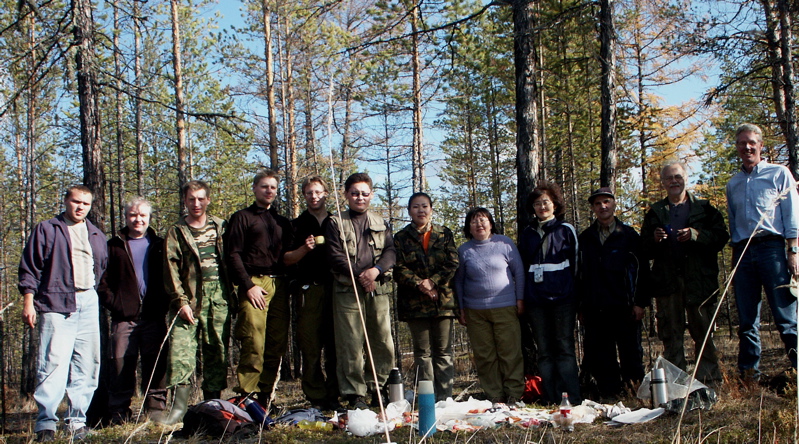
We came to collect beetles. Karl Erik's main research interest is insect adaptations to extreme environments, especially winter cold. He received for a grant proposal to study adaptations in Siberian beetles, with some comparison to their relatives in Siberia and Africa (he has a house in Mombasa). The Siberian beetles are of special interest because it is one of the coldest places on Earth outside Antarctica, where there are no beetles at all. So these beetles are the overachievers among low-temperature insects. It can also get quite hot in the summer -- the overall tempertaure range is from a minimum of around -60°C (-76°F) in winter to a maximum of about 40°C (104°F) in summer, for a total range of 100°C. That's our whole crew above, including our new Siberian friends.
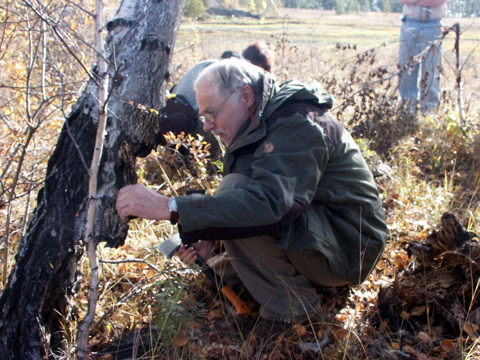
Karl Erik doing one of the things he does best, looking for beetles. We were looking mainly for adult beetles and larvae that live inder the bark of dead trees. The tool of choice is a small hatchet for peeling the bark off of the logs. We spent five days in the field doing this, a lot of it in larch forests that were burned over in the big fires of 2003 so that there were a lot of dead trees.
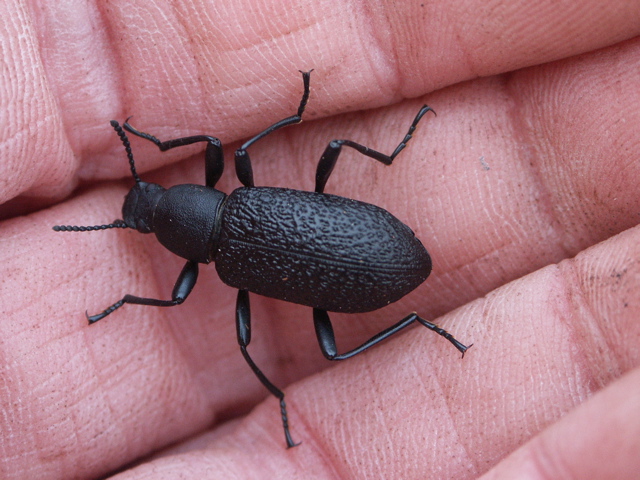
In birch trees like the one Karl Erik is working on, we found a lot of one of our main species of interest, Upis ceramboides, a tenebrionid or darkling beetle. It is a freeze-tolerant species, meaning that ice forms in its hemolymph, the fluid that fills its body cavity. At Siberia's extreme low temperature, most of the water in its body will be in the form of ice, so that the cells are extremely dehydrated.
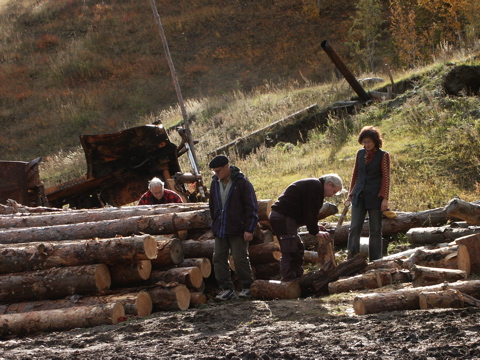
Some of the best beetle hunting was in piles of pine and larch logs at sawmills. Natalia Li, our main contact in Siberia, ia on the right.

This sawmill operator had lots of helpful advice. He really did seem to know something about the beetles in his logs and could tell us where we were most likely to find them.
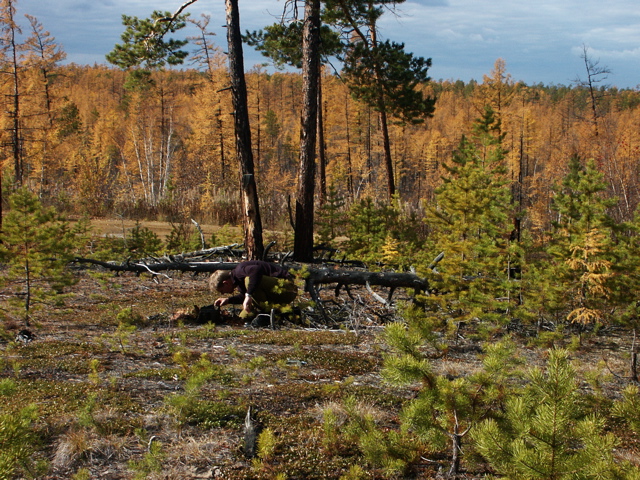
Here Christer is hunting in a burned-over larch forest for our other main quarry...

Rhagium inquisitor, a freeze-avoiding species in the Cerambicidae or longhorn beetle family. Like other freeze-tolerant insects, its hemolymph contains antifreeze proteins (AFPs) that prevent ice crystal growth. For his PhD Erlend purified and characterized a Rhagium AFP that turns out to be a whole new type and the most potent AFP to date. The hemolymph also contains very high concentrations of glycerol. Erlend says the larvae look like down sleeping bags.
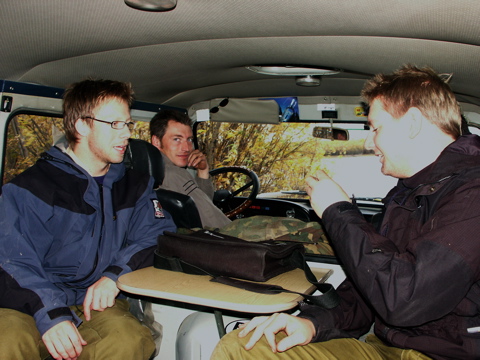
As for Arne and Christer, they came along largely because of their inordinate fondness for beetles; they must be gods. I once heard Arne refer to a Upis as a "vakker, seksbeinet dame" -- a beautiful, six-legged lady, prompting Erlend's comment (in English): "You oughtta get some help." And, yes, he really did know the gender of the beetle.
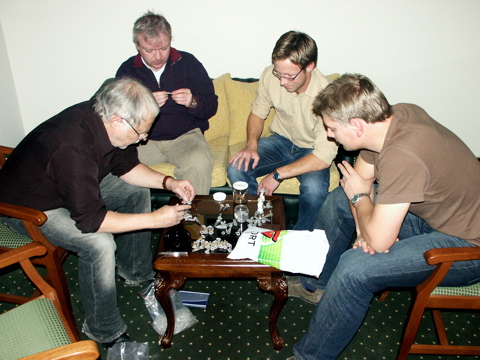
A beetle-sorting session at Yakutsk's fanciest hotel. Looks like a bunch of drug dealers weighing out their wares.